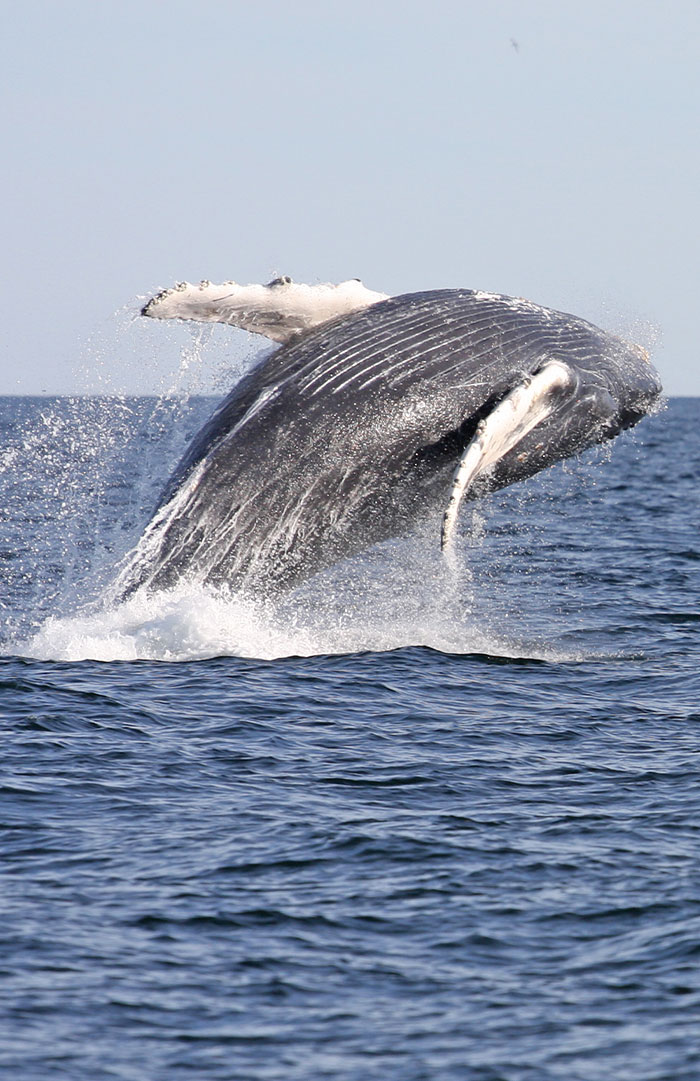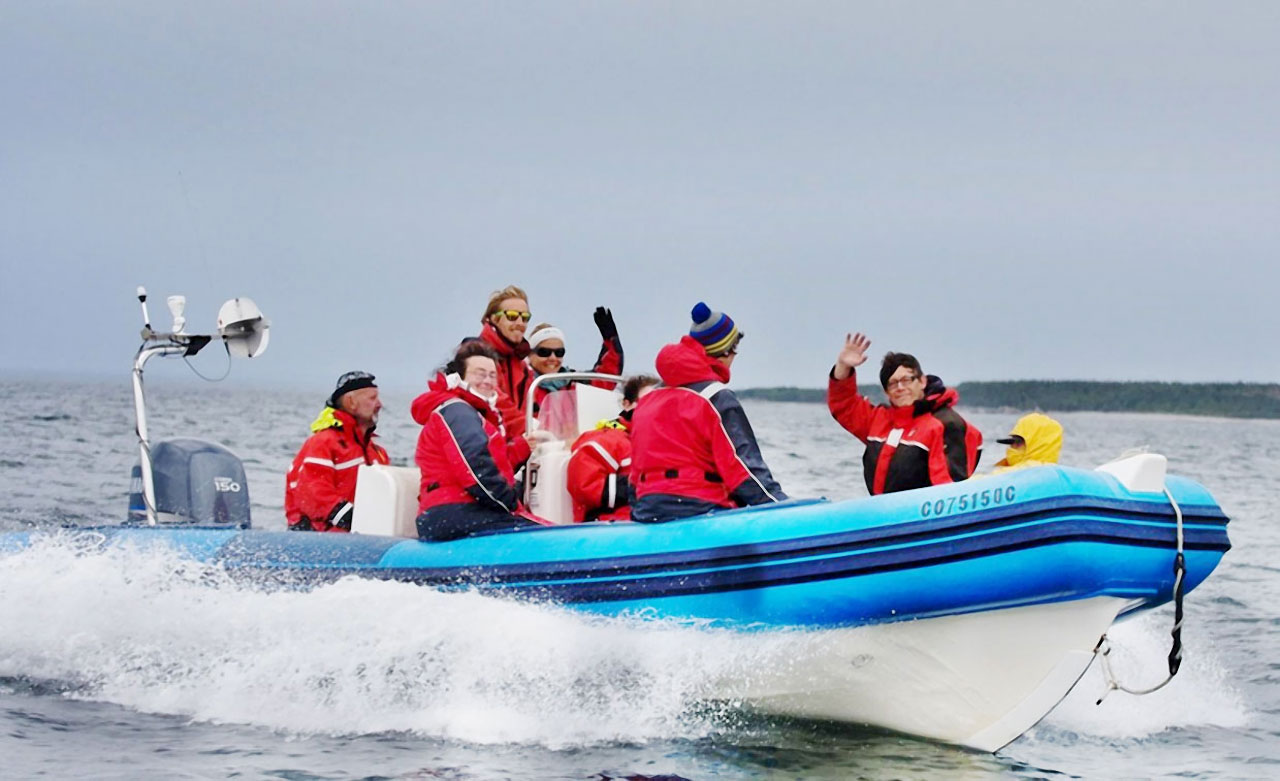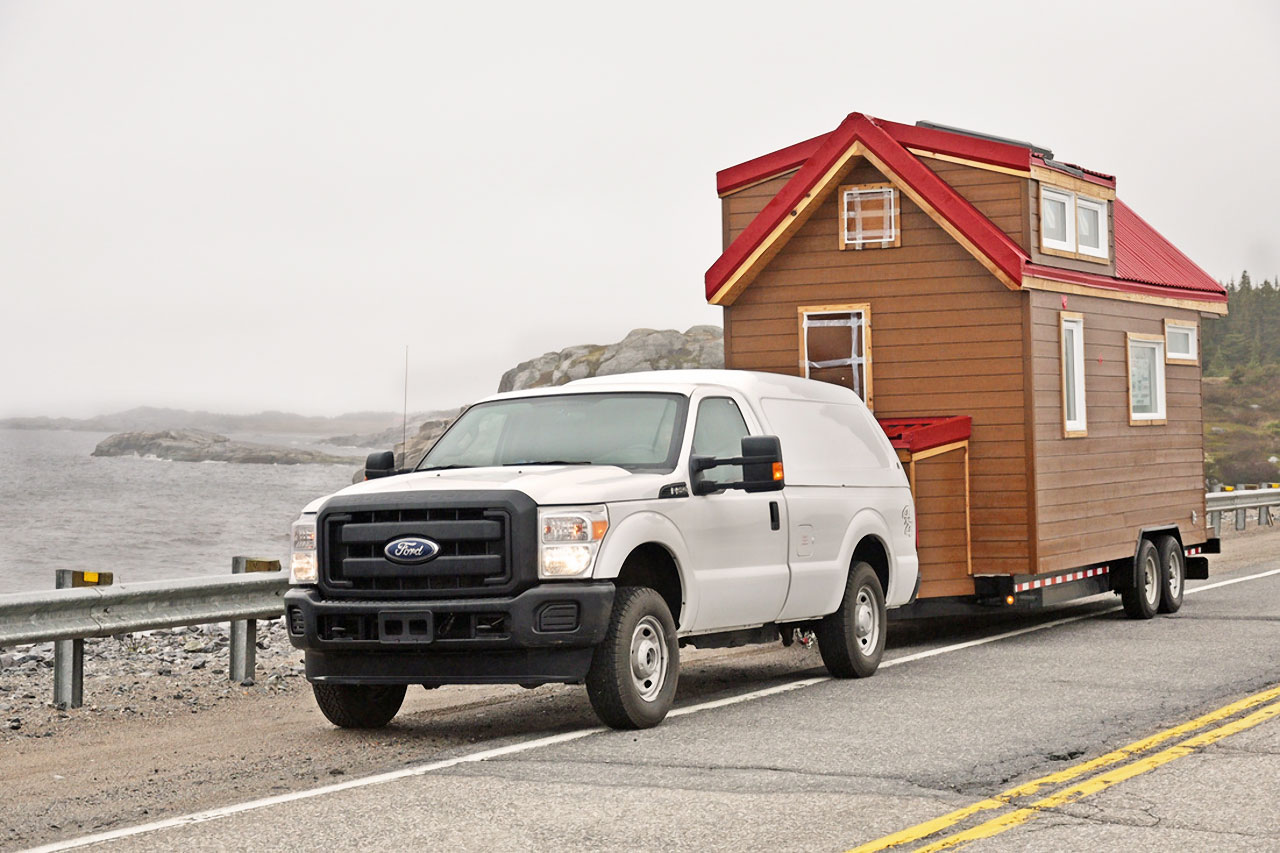
Atlas has partnered with many amazing organizations and causes throughout the years. One of the most unique projects our team has been part of was the tiny home build with Canadian wildlife biologists Katy Gavrilchuk and David Gaspard.
In 2016, Katy and David embarked on a 957-mile journey along the coast of Eastern Canada to study the habits and migration patterns of marine life species in the Gulf of St. Lawrence. To allow them closer access to follow migration patterns along the coast, the team constructed a mobile tiny house to serve as their research base and “home away from home.” They knew they needed an efficient, thermally-resistant insulation solution and decided Atlas EnergyShield polyiso would be the perfect fit.
Atlas provided EnergyShield Pro continuous insulation boards, which were installed in both the roof and walls of the tiny house. EnergyShield Pro provided the R-value and thermal efficiency needed, as well as key sustainability features – it’s produced with no CFCs, HCFCs or HFCs; has zero Ozone Depletion Potential (ODP) and negligible Global Warming Potential (GWP); and is made from between 9.2-13.5 percent recycled content. This, along with their efforts to use eco-friendly products throughout the expedition, helped the biologists reduce their personal impact on the environment. In addition, the Atlas product featured durable aluminum facers that also served as a water resistive barrier – very helpful for the tiny home that experienced varying weather conditions throughout the six-month journey.
Having their own tiny house gave Katy and David more time and flexibility to conduct their research, allowing them to observe over 200 whales and 100 dolphins – a record breaking season, including whales that hadn’t been spotted since the 1980s. They also used the tiny house as a way to educate the public about low-impact living, giving tours during their stops throughout Canada. They were able to help influence others to live smaller and more environmentally-conscious lifestyles, which provided for a very rewarding experience.
You can read the full case study about this project here. Atlas is proud to have worked with Katy and David on their tiny home, helping them further their research to protect some of the world’s most incredible creatures.

Did You Know?
- Blue whales (or Balaenoptera musculus) are the largest animal to have ever lived on earth and can be recognized by their unique blue/grey pigmentation pattern.
- A blue whale’s tongue weighs about 2.7 tons (the weight of an elephant) and its mouth can hold up to 90 tons of food and water!
- The fin whale (Balaenoptera physalus), the second largest animal after the blue whale, is the one of the only mammals to have asymmetric body coloration – their right lower jaw is white while the left lower jaw is dark-colored.
- The male humpback whale (Megaptera novaeangliae) sings to attract females as a type of courtship display and in addition, their singing may also be used to establish dominance among males.
- Just like humans, female humpback whales have been known to form long-lasting associations with other females.



